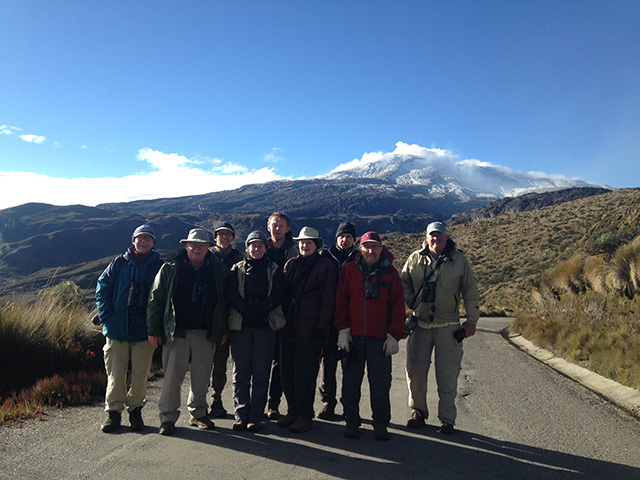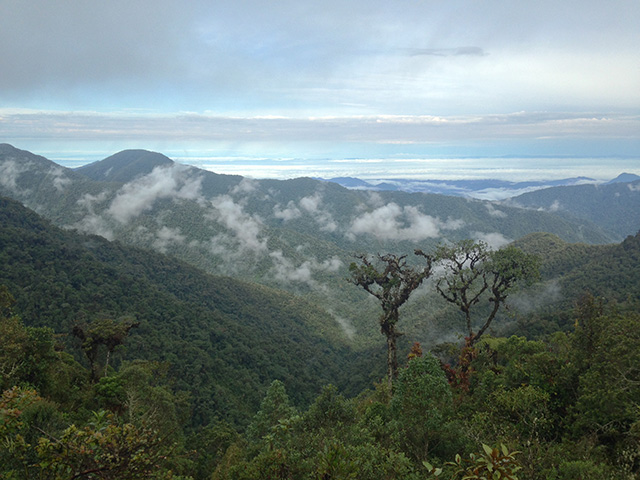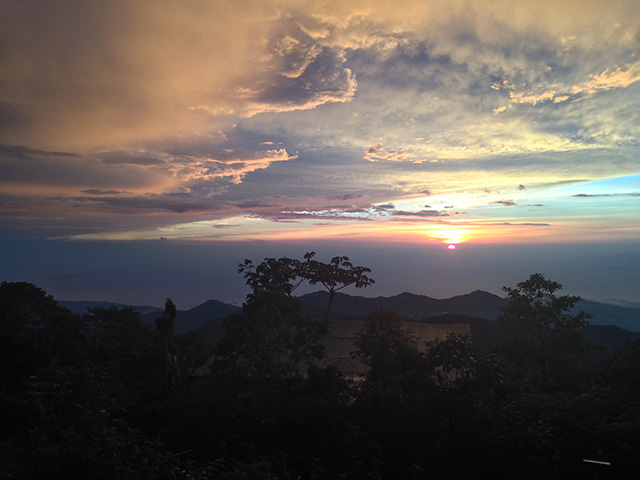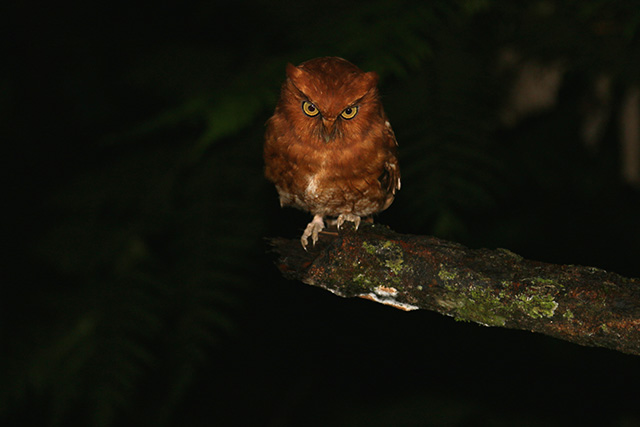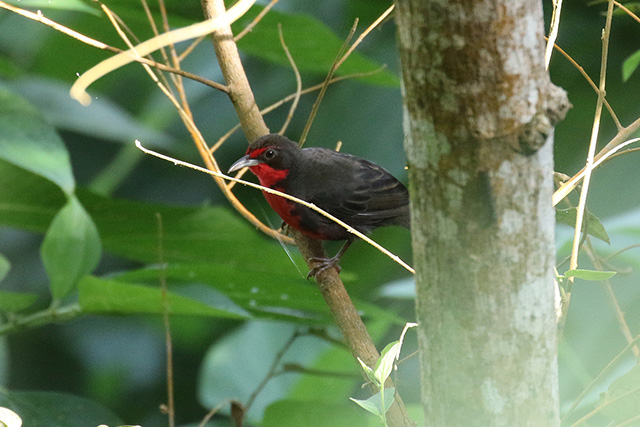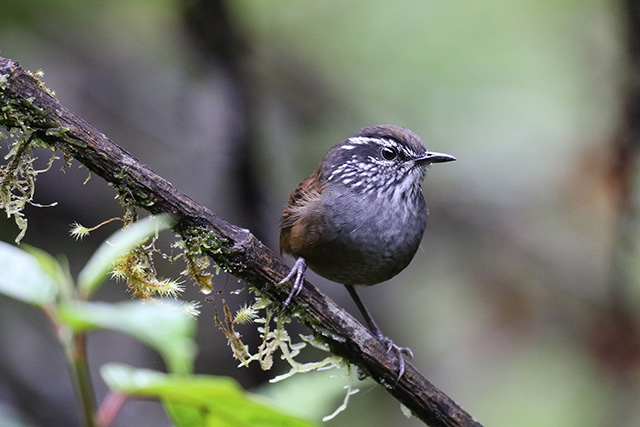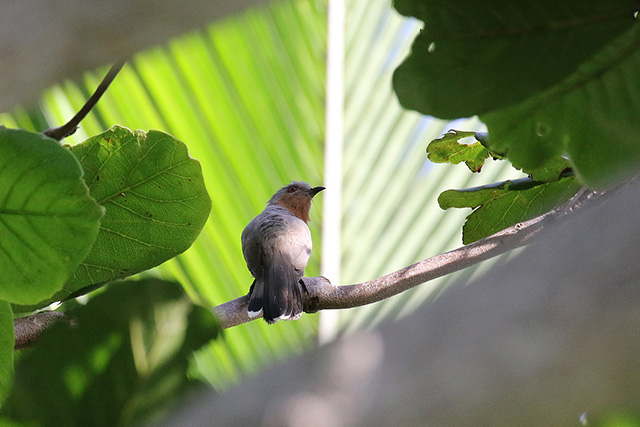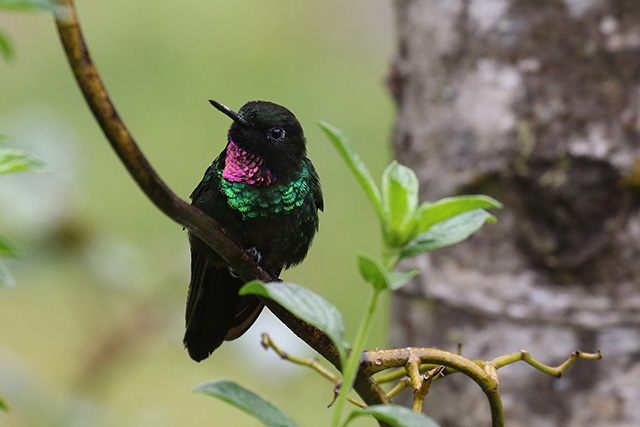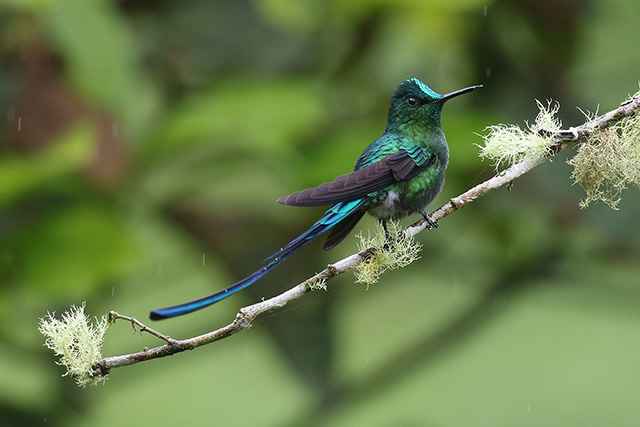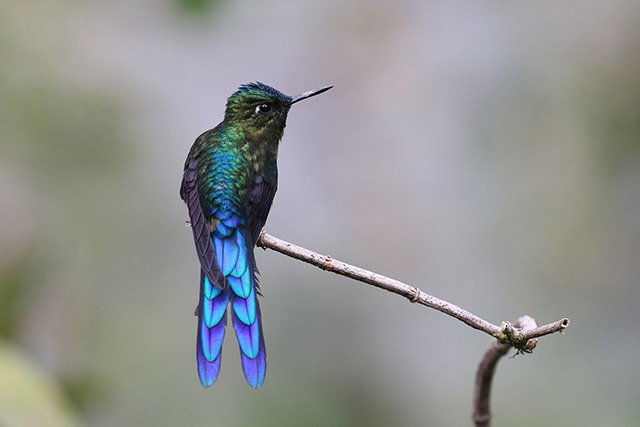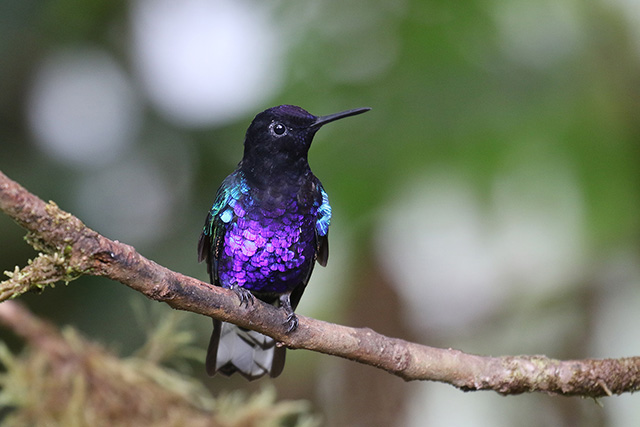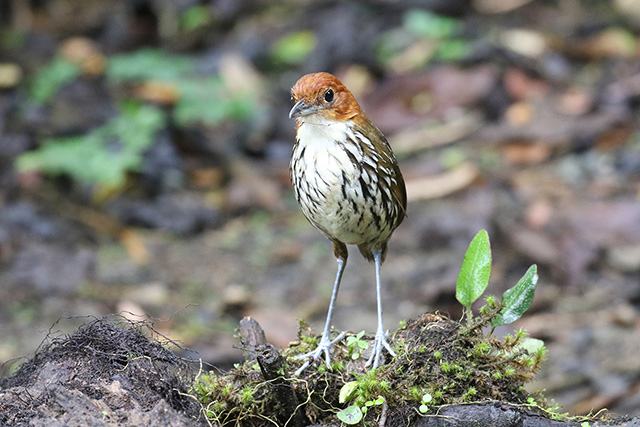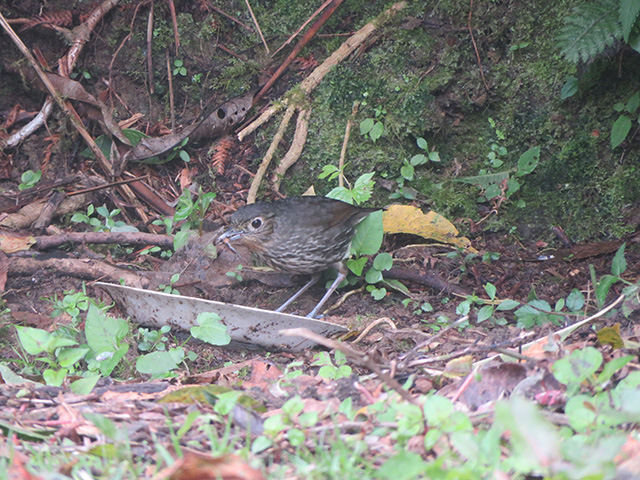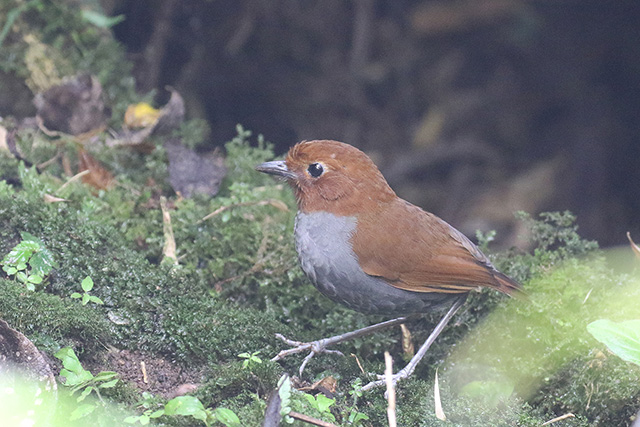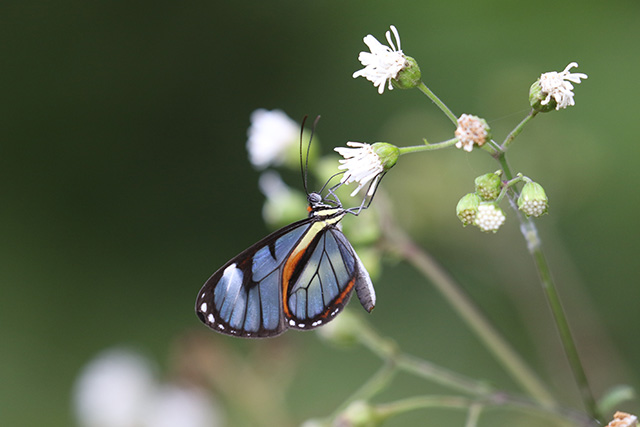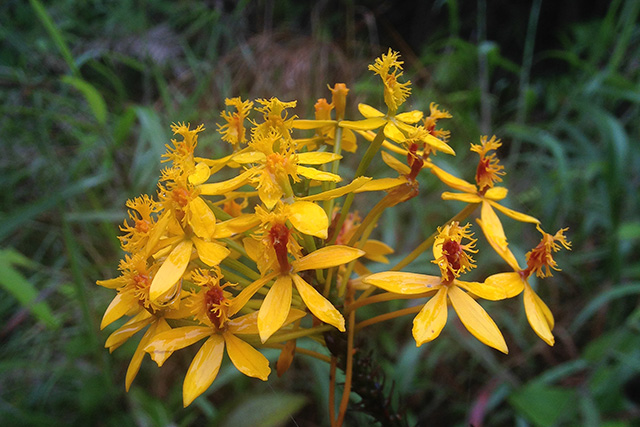From the Field
November 12:
Jake Mohlmann on his just-completed tour to Northern Argentina - High Andes, Chaco and Iguazú Falls
On our recently completed tour through northern Argentina we encountered 429 species of birds as we scoured lush cloud forest, arid altiplano, dense Chaco thickets, and riverine rainforest.
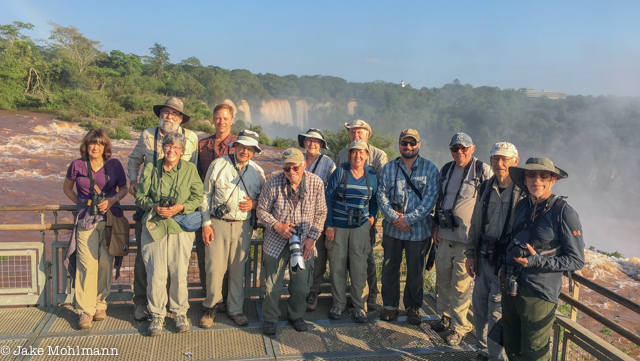
Our group was delighted to have Iguazú Falls all to ourselves
Four days based in the Yungas forest produced a fine list of birds and one particular experience had us all slapping high fives at the end. While quietly watching a Rufous-throated Dipper carefully hold on to the slick rocks while somehow foraging in the raging waters of the Yala River, we noticed a family of Torrent Ducks, including 2 recent youngsters, struggling upriver within a few meters of our group and setting off a picture-taking frenzy. We were wondering why they were so 'tame' when we realized we're weren't the most feared creatures on the river bank. A hungry Tayra, a three foot long member of the weasel family, was working the riverbank nearby. Immediately after this encounter several range-restricted Red-faced Guans hurled overhead and perched on moss covered branches for a trifecta of specialties.
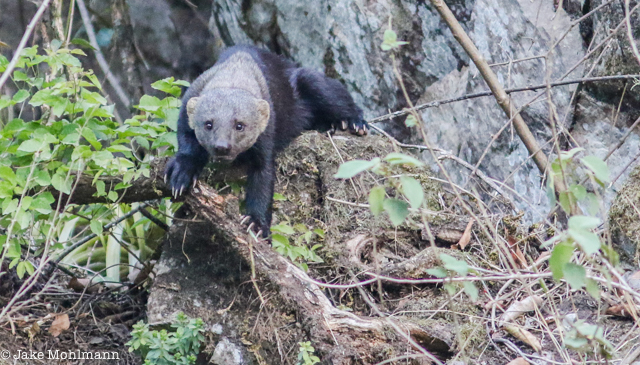
A Tayra lurks on the riverbank
Hummingbirds were in good supply this year with 16 species visiting an abundance of flowering plants; highlights included the dainty Slender-tailed Woodstar, the jet Black Jacobin, the near Bolivian endemic Wedge-tailed Hillstar, and the ridiculously colorful Red-tailed Comet.
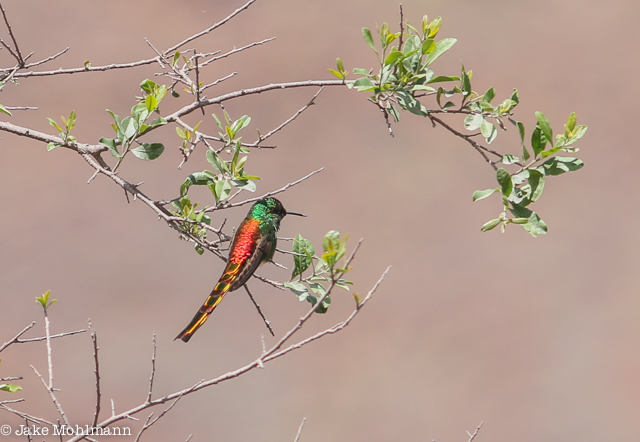
A male Red-tailed Comet poses for pictures
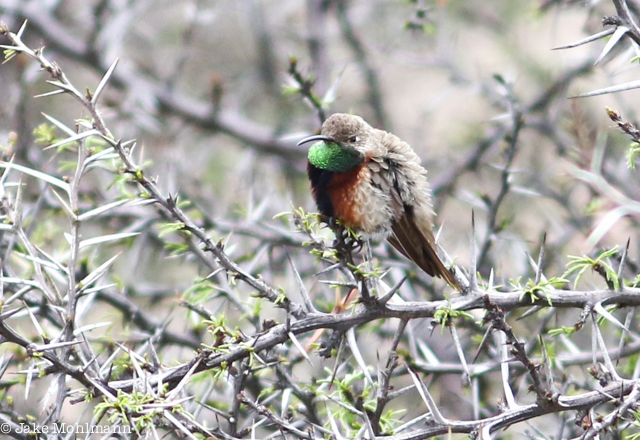
With 99% of its range in Bolivia this Wedge-tailed Hillstar was a welcome treat
The high Andean altiplano hosted a horde of species including three varieties of flamingo including Andean, Chilean, and James’s. At one of the high elevation bogs near the Bolivian border, a pair of Diademed Sandpiper Plovers appeared (before we could get out of the car!) and foraged very closely before taking flight far down the canyon. Nearby another high altitude specialty was heard, then seen, and we watched a trio of Rufous-bellied Seedsnipe work through a moist vegetation.
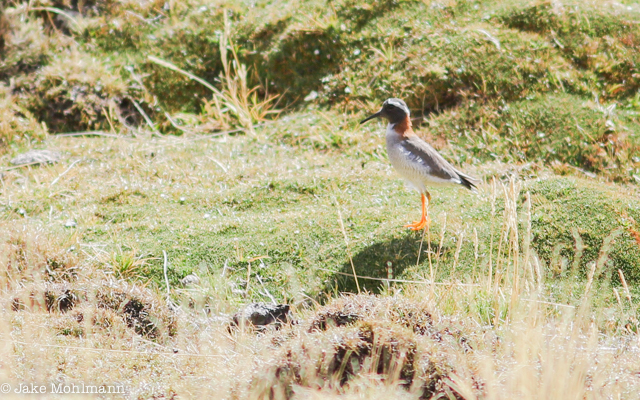
Diademed Sandpiper Plover
We spent several days in the unique Chaco habitat where this year we encountered both members of the highly sought after family Cariamidae: we watched at length both Red-legged and Black-legged Seriemas taking breaks from screaming their dog like ‘songs’. Other birds unique to this region were the vibrant Many-colored Chaco Finch, the enormous Great Rufous Woodcreeper, and the docile Spot-backed Puffbird.
It’s also worth noting that we actually saw five species of tinamous, quite a feat for any birding trip. These included bright-billed Tataupa, Ornate, Red-winged Huayco, Andean, and the regal Elegant Crested, with young in tow.
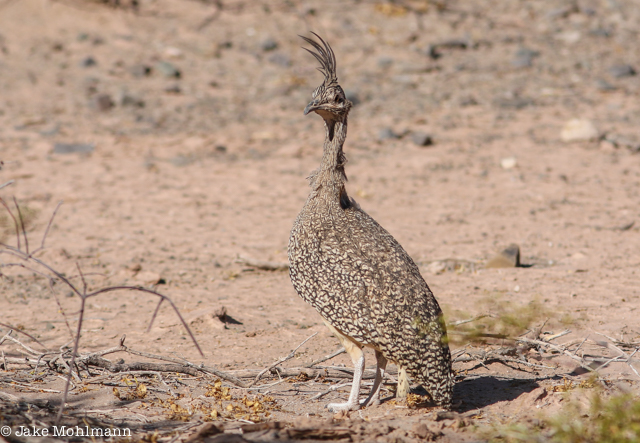
An adult Elegant Crested Tinamou stands guard with chicks nearby
Our final days were spent exploring the various roads and trails weaving through Iguazu National Park and getting exposure to an entirely new set of birds. Having the upper falls trail all to ourselves before the masses arrived one morning was a wonderful experience we’ll not soon forget!
October 10:
Susan Myers on her on-going tour, Indonesia: The Moluccas
The inaugural Wings tour to the far flung islands of the Moluccas in east Indonesia is about half over and so far it’s been nothing but an outstanding success! I’m writing this from my comfortable hotel room on the little known island of Kai Kecil, from where we ventured out this morning to the neighboring island of Kai Besar. Our main target was the diminutive Little Kai White-eye, sometimes perhaps more romantically known as Pearl-bellied White-eye. A speedy boat trip took us to the sleepy town of Bombai and we climbed on board the little local bus that took us for a bumpy, but fun, ride up to Bukit Indah – the Beautiful Hill. The hill is still cloaked in wonderful floristically diverse tropical rainforest and we soon connected with the small island endemic whilst taking our morning tea. We then turned our attention to some other fancy specialties of these islands of Wallace fame, which are such hotbeds of faunal diversity shaped by millennia of natural selection. All the while we were accompanied by an astounding array of different and fancy butterflies. An early encounter with the scarce Kai Cicadabird (or Cuckooshrike) created much excitement and we chased this very handsome member of the caterpillar-eater family as it flitted through the trees – presumably living up to its name, disappearing and then reappearing on cue. Later we found our first Varied Trillers (a possible future split?), Black-faced Friarbirds, Island Monarchs, Kai Coucal and very cute Yellow-capped Pygmy-Parrots. Maybe the biggest hit for the morning, though was a stunning White-tailed Monarch, another fascinating endemic of the amazing islands of Maluku!

The fast boat to Kai Besar
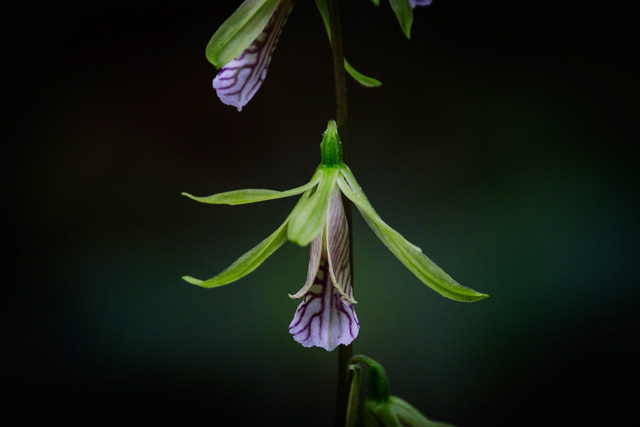
An unknown but spectacular orchid emblematic of the natural richness of the Moluccas

Morning tea in the field with our helpful crew

Searching for the Kai Coucal
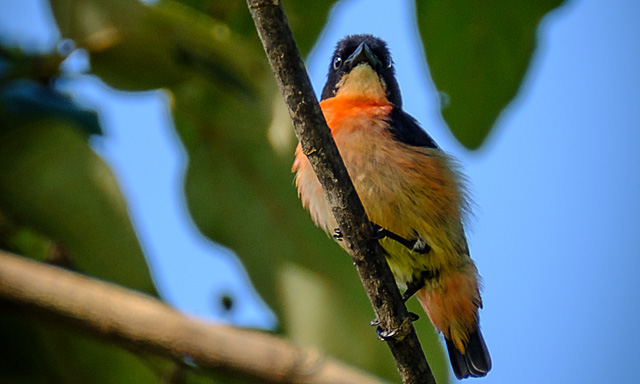
Mistletoebird, or Salvadori’s Flowerpecker if split
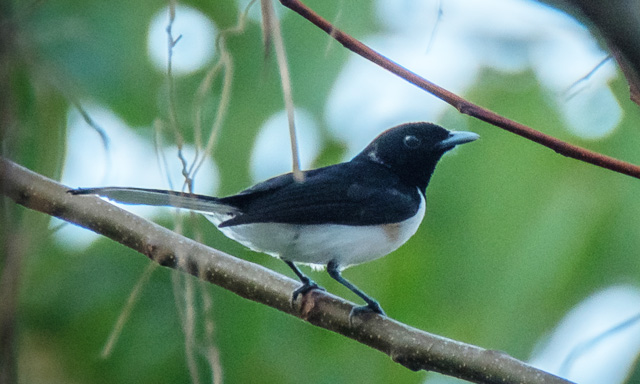
White-tailed Monarch
October 9:
Rich Hoyer on his recently completed tour, Ecuador: The Amazon Lowlands
There may not be any pronounced dry season on the Equator in the Amazon Basin, but if there was one week-long dry spell this year, we found it. It was hot as usual in the tropics, but that was an even tradeoff for not being forced to take time off due to rain. It was a wonderful week that passed by all too quickly, filled with great birds and some incredible tropical diversity in the way of lizards fighting on trees, killer mushrooms invading insect brains, and a very friendly, almost even loving, Amazon Tree Boa. We saw some marvelous birds at the canopy platform, such as a perched Orange-breasted Falcon and Yellow-billed Nunbirds, while along the various trails elusive species such as Collared Puffbird, Wire-tailed Manakin, and Black-faced Antbird performed well. Super delightful were the several boat rides on the lake (cocha) and stream (yacu), where rare kingfishers such as American Pygmy and Green-and-rufous were ridiculously abundant and easy to see. But we didn’t have to go far from our rooms (or the lodge’s bar) to enjoy some of the best birding in the area – with the exception of the Orange-breasted Falcon, all of the following photos were taken right around the lodge’s buildings.
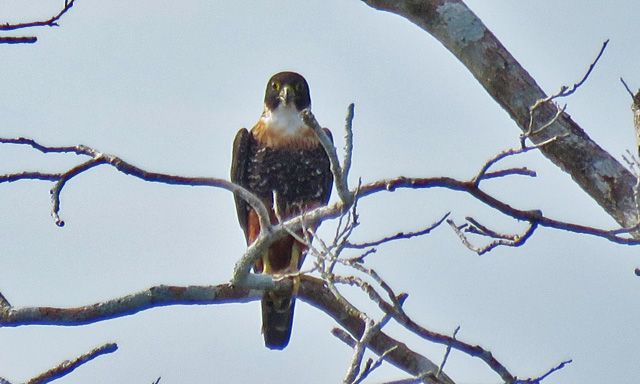
Orange-breasted Falcon
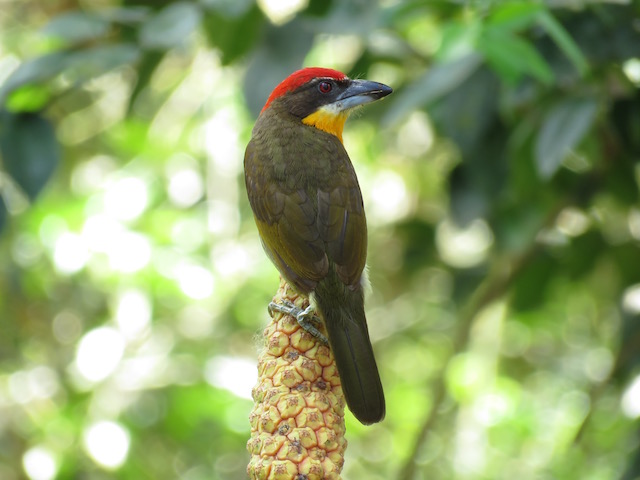
Scarlet-crowned Barbet
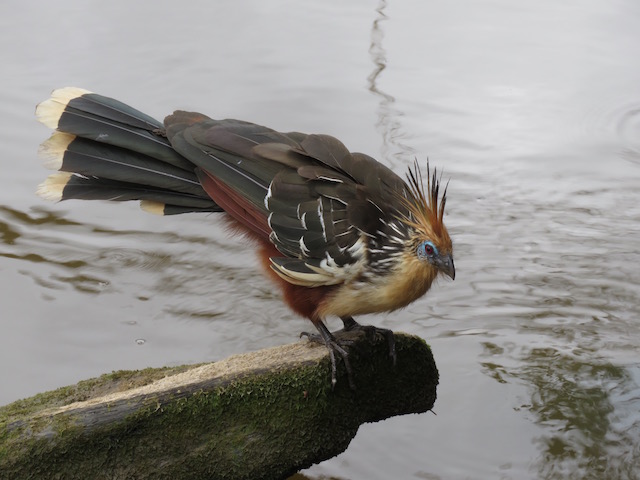
Hoatzin
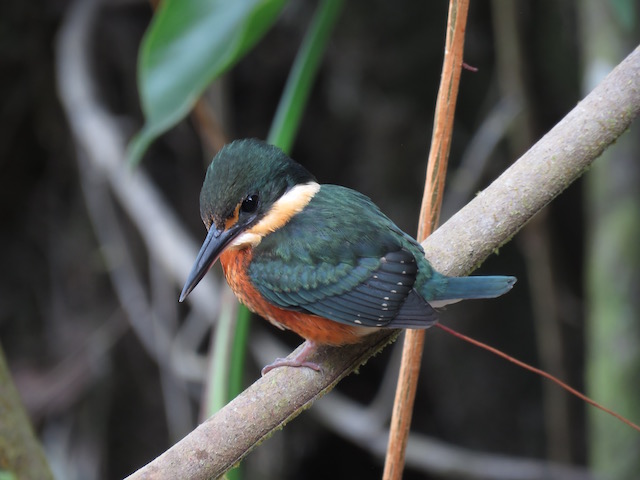
American Pygmy Kingfisher
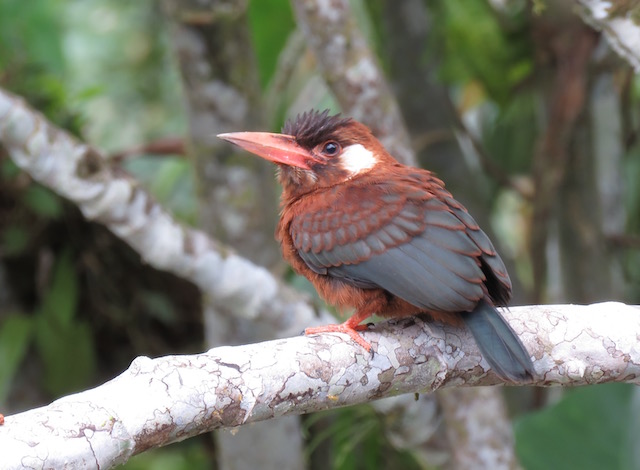
White-eared Jacamar
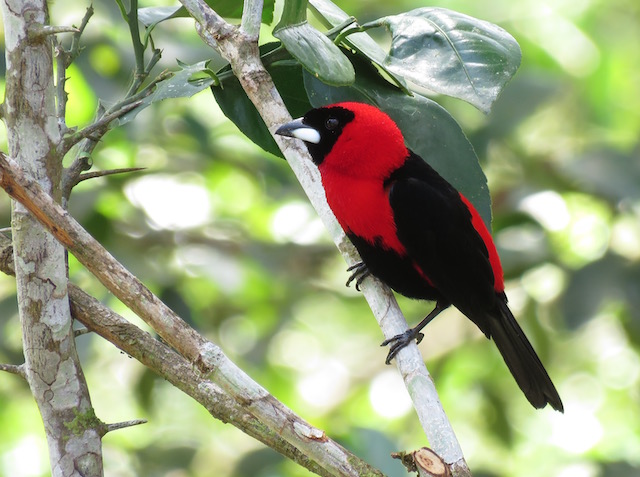
Masked Crimson Tanager
October 7:
Rich Hoyer on his recently completed tour, Costa Rica
Costa Rica in July was the perfect summer getaway offering an amazing selection of tropical species in an agreeable climate. We had nearly flawless weather throughout, beginning and ending in refreshingly cool higher elevations. There were so many wonderful experiences with the birds we saw that there was no outstanding favorite. Great Tinamous singing their haunting songs (audible from our rooms), Snowcaps darting amongst the porterweed flowers, a Crested Owl called into view at Celeste Mountain Lodge, and adorable Pied Puffbirds near Maquenque received high votes. This exquisitely cute Central American Pygmy-Owl took the prize with the most votes on the tour, but just barely.
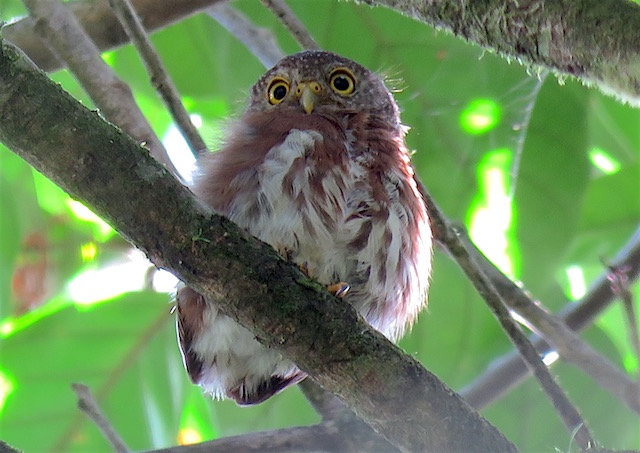
We had one of the most unexpected birds of the tour within the first hour of birding and just down the street from our San José area hotel when a juvenile Bicolored Hawk flew in and landed for extended views.
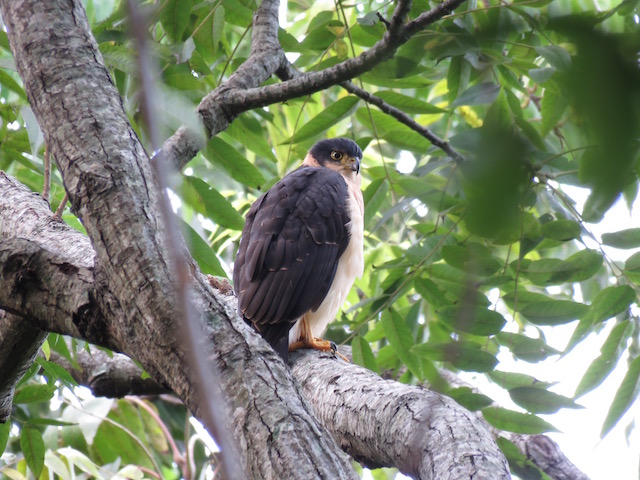
In the Cerro de la Muerte Highlands, we soon connected with several Resplendent Quetzals, getting our best views right from our rooms.
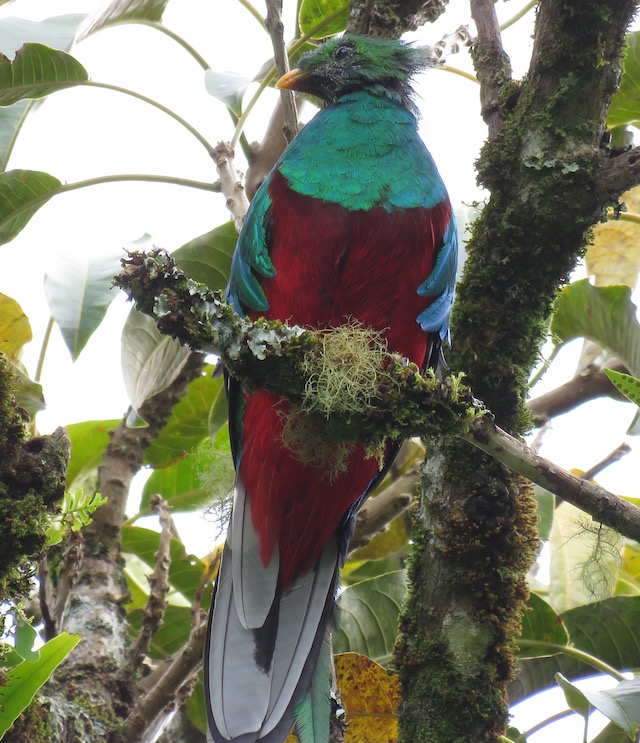
The recently split Northern Emerald-Toucanet was one of the highlights we came across in our quest for the quetzal.
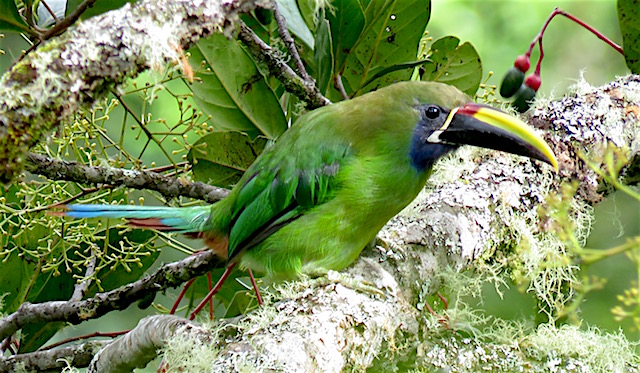
The hummingbirds at Rancho Naturalista were tops, including both Black-crested and the very rare White-crested Coquette, as well as the incomparable Snowcaps. Our time in Tortuguero National Park began with a wonderful night boat ride on the canals where we our capitán showed off his skills at spotting many roosting birds, including a juvenile Rufescent Tiger-Heron and this sleeping American Pygmy-Kingfisher.
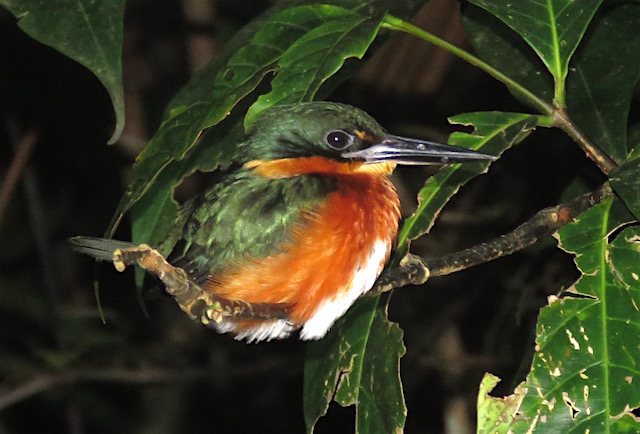
There was nothing wrong with the one morning downpour we waited out at Tortuguero, especially when the clearing of the skies was coupled with a Black-and-white Hawk-Eagle leaving the park’s forest for its morning soar. The weather held out for our memorable viewing of a Green Sea Turtle laying eggs in her laboriously excavated nest that same night. One of the most-viewed and liked videos leader Rich Hoyer ever posted to Facebook was of this Bare-throated Tiger-Heron going into its “sun salutation” pose from the roof of the boat dock at our jungle lodge. The video can be seen here: https://youtu.be/NgpgI7cDTtQ
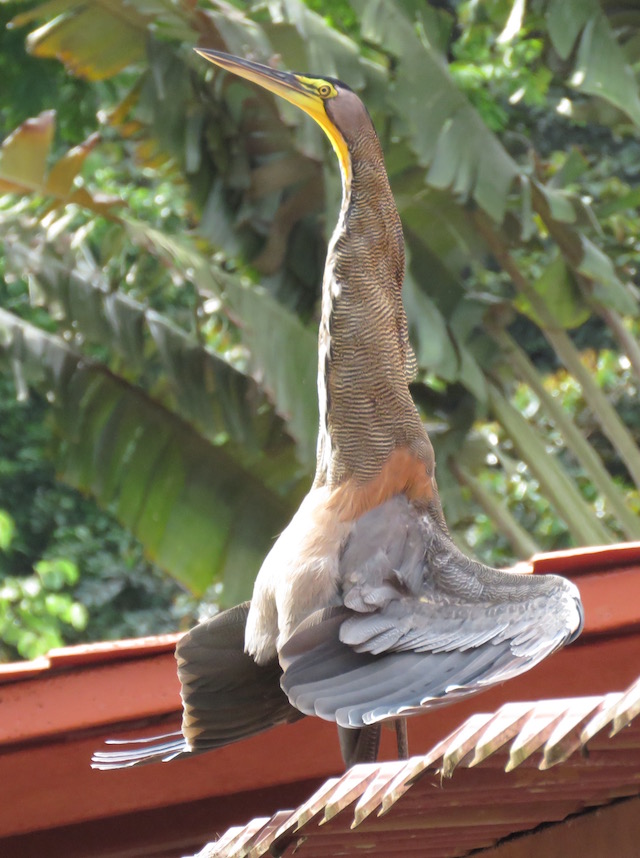
And thanks to our boatman’s amazing vision we were able to see a handsome Black-and-white Owl on its day roost.
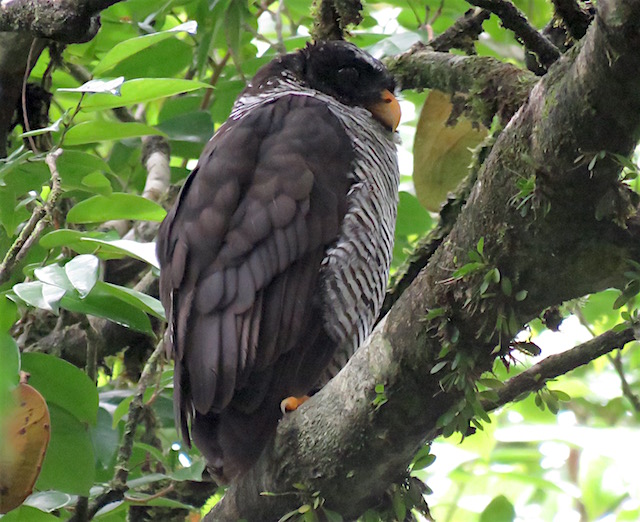
Maquenque Lodge’s dining hall was a great place to get your fill of gaudily plumaged birds, such as Purple Gallinules feeding chicks just below the building or like this Crimson-collared Tanager at the bananas.
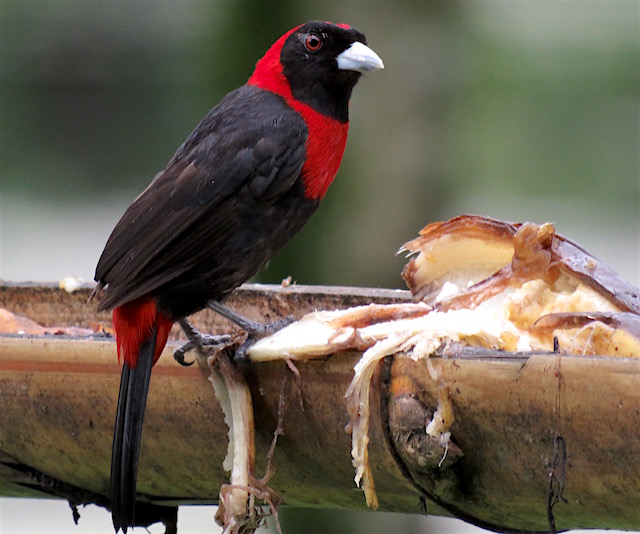
The tour was so much more than just birds – the moths at Rancho Naturalista were out of this world, with a the huge and gorgeous silk moth Copaxa rufinans the highlight.
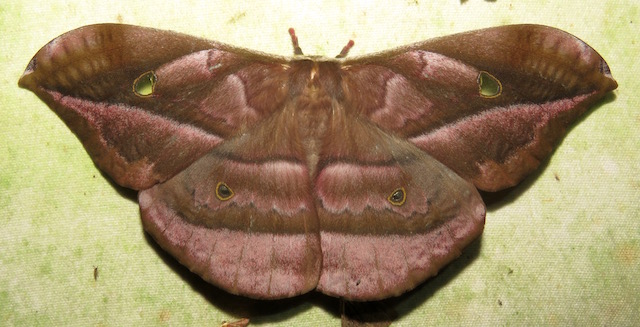
We didn’t see many snakes, but the most memorable encounter was a tiny Cope's Vine Snake gingerly threading its way through the vegetation at Tenorio National Park.
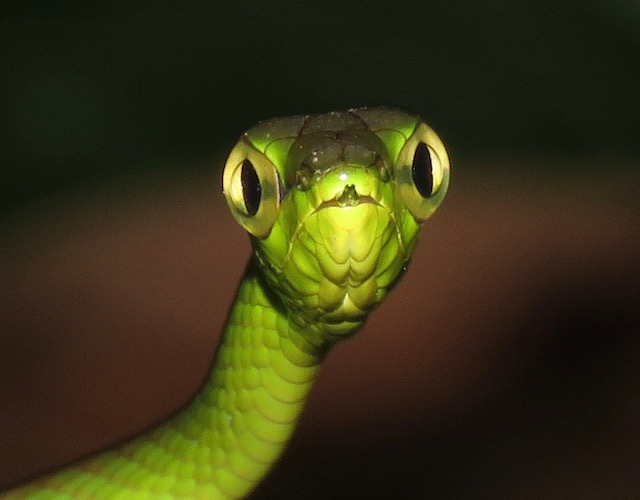
And finally, this mother and her baby Hoffmann's Two-toed Sloth were spotted by our driver, who was birding with us for the morning. The video of them cuddling was also one of Rich’s most watched videos, which can be seen here: https://youtu.be/NgpgI7cDTtQ
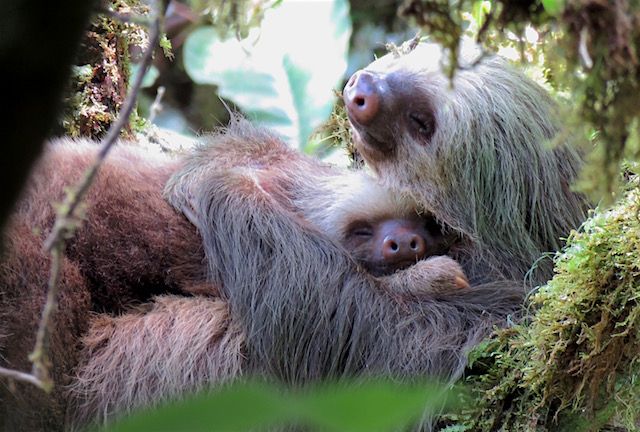
October 1:
Fabrice Schmitt on his just-completed tour, Colombia
It was another fantastic tour to Colombia! Visiting the three cordilleras, crossing both the Magdalena and Cauca valleys, birding from sea level to 15,000 feet elevation, and even adding a few days in the isolated Santa Marta and Guajira Peninsulas, we had an amazing overview of the Colombian avifauna.
Our group at 15,000 feet in Nevado del Ruiz National Park
Superb cloud forest in the Western Cordierra
Sunset in the Santa Marta Cordillera
It’s hard to pick the best birds of the trip amongst hundreds of wonderful species, but here are the top ten as voted by the group: Santa Marta Screech-Owl, Rosy Thrush Tanager, Ocellated Tapaculo, White-whiskered Spinetail, Buffy Helmetcrest, Santa Marta Antpitta, White-headed Wren, Chestnut Piculet, Munchique Wood-Wren, and tied for ninth place, Dwarf Cuckoo and Blue-naped Chlorophonia.
Santa Marta Screech-Owl - Image: Bruce Sorrie
Rosy Thrush-Tanager
Munchique Wood-wren
Dwarf Cuckoo
We visited more than 10 different hummingbird feeding stations and saw no fewer than 57 species of these fascinating birds!
Tourmaline Sunangel
Long-tailed Sylph
Violet-tailed Sylph
Velvet-purple Coronet
We also visited several antpitta feeders, allowing great views of several members of this secretive group.
Chestnut-crowned Antpitta
Santa Marta Antpitta
Bicolored Antpitta
We were amazed as well by the remarkable range of flowers, orchids, grasshoppers, butterflies, moths, etc. Colombia is definitely THE biodiversity country!
One of the numerous glass-winged butterflies
One among many, many species of orchid
August 1:
Rich Hoyer on his recently completed tour, Brazil: Marvelous Mato Grosso
This year’s Marvelous Mato Grosso tour was amazing. Each of the four areas we visited provided indelible memories of fabulous birds, mammals, and other critters. On our first stop at the Chapada dos Guimarães we connected with most of the cerrado specialties such as Coal-crested Finch and Chapada Flycatcher and enjoyed the marvelous scenery and the best food of the tour at our wonderful lodge nestled in the middle of the national park. Among the favorite birds we saw there was the stunning Helmeted Manakin.
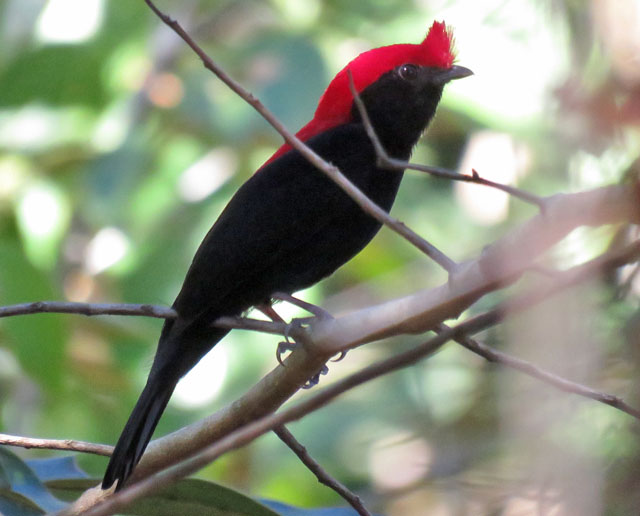
Helmeted Manakin
Cristalino Jungle Lodge was even more amazing, and we’ll probably never repeat this year’s unbelievable sightings of Crested and Harpy Eagles in the same week. The former we discovered perched in large trees close to a trail, being mobbed by toucans, aracaris, and woodpeckers, and we had it in the spotting scope right over our heads before it flew, landing on an open branch for an even better view. Three days later, the Harpy was found by two of the boatmen running an errand, and guide Diego sped 20 minutes upriver to fetch us; remarkably the bird stayed on its riverside perch for at least 45 minutes, and we got there just in time (one minute!) to marvel at this monster of a raptor.
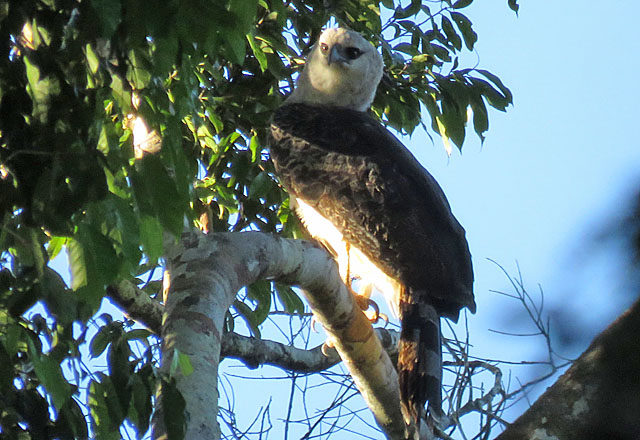
Crested Eagle
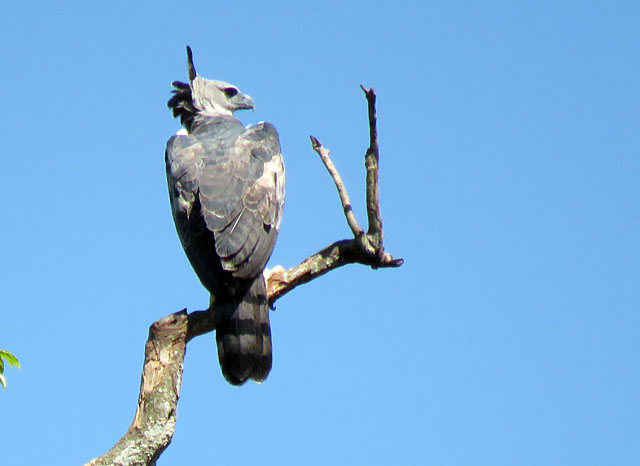
Harpy Eagle
Then came our time in the Pantanal, with so many birds and animals, and all so much easier to see than those in the Amazonian forests. The Jaguar experience was unbeatable and the best we’ve ever had – on three outings upriver from our hotel we spotted five different individuals, with excellent views of all, one even successfully catching a small caiman as we watched. With each animal’s spots like an individual fingerprint, we were amazed to discover that these were all different individuals than any of those seen on the previous seven tours we’ve taken here – now totaling 24 jaguars. The birding was fabulous too, with White-naped Xenopsaris, Hyacinth Macaw, and Great Rufous Woodcreeper among the favorites, but we were especially lucky to have one stunning Scarlet-headed Blackbird perch next to the Transpantaneira on our way back north.
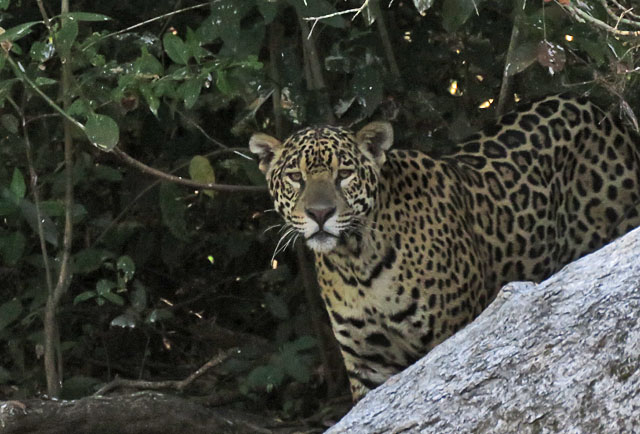
Jaguar
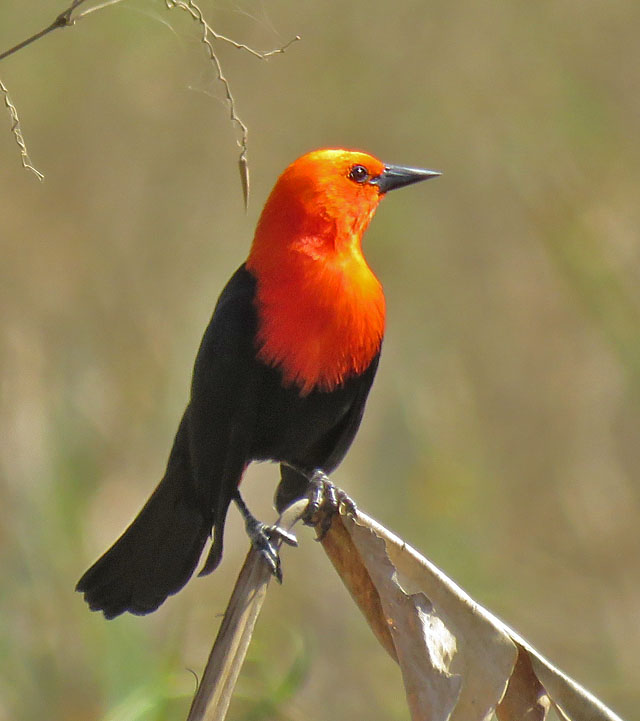
Scarlet-headed Blackbird
We finished the tour with an extension to Foz do Iguaçu, then transferring to the Argentinean side for birding and visiting Iguazú Falls. The falls were as spectacular and beautiful as imagined, as we birded our way to three different viewpoints. A Blond-crested Woodpecker, Creamy-bellied Gnatcatcher, Rufous-capped Motmot, and Black-fronted Piping-Guan were some of the highlights in the area, but we saw many other attractive, more common birds such as the stunning and unusual Magpie Tanager in the national park where they have become acclimated to people on the trails below.
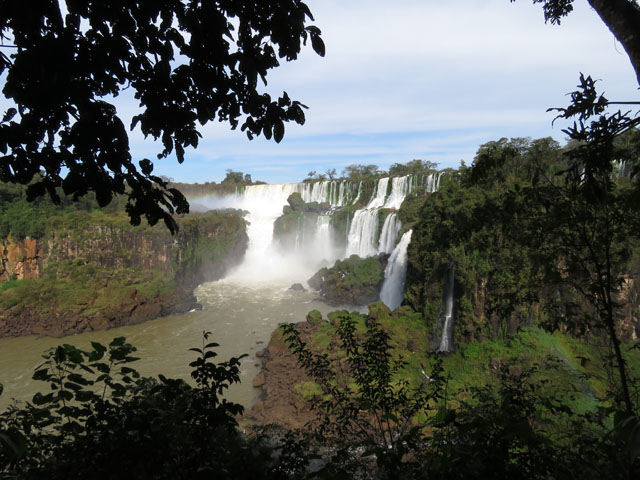
Iguazú Falls
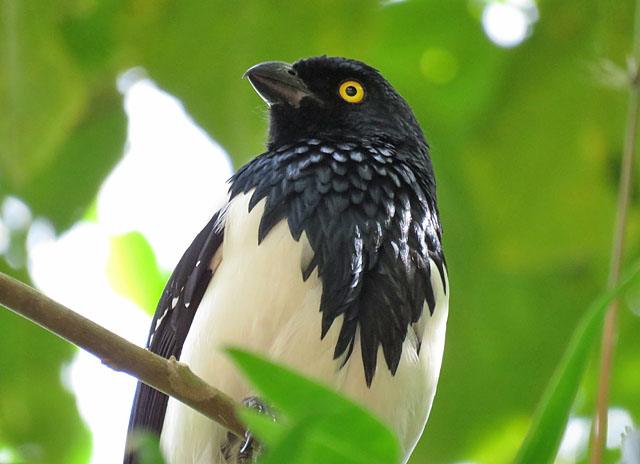
Magpie Tanager
In the end we saw or heard a mind-boggling 560 species, and I’m already looking forward to next year.
July 11:
Derek Lovitch on his just-completed tour, Maine and New Hampshire
We recorded 157 species, including 19 species of warblers, eight species of flycatchers, seven thrushes, five terns, and four alcids. Saltmarsh and Nelson’s Sparrows in the coastal salt marshes and Bicknell’s Thrushes at 5,000 feet highlighted the first two days. Boreal birding yielded specialties such as Spruce Grouse before we ventured offshore to visit with Atlantic Puffins, Razorbills, Black Guillemots, and so much more. Breathtaking scenery. Great food, especially lots of fresh lobster. A couple of Moose, too. Yes, this is how the birding life should be!
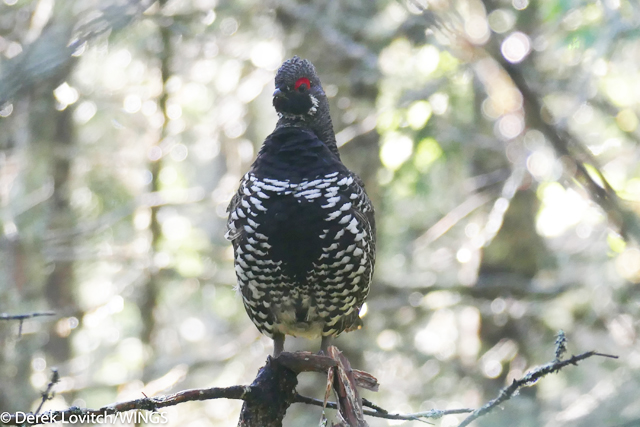
Spruce Grouse males are arguably the most stunning of all the grouse
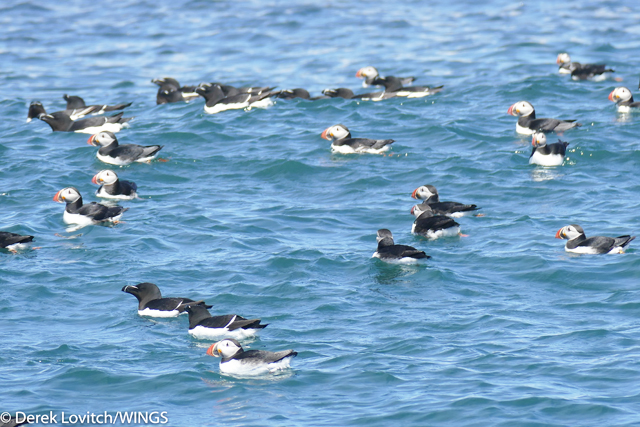
Atlantic Puffins and Razorbills taking a short break from their breeding responsibilities
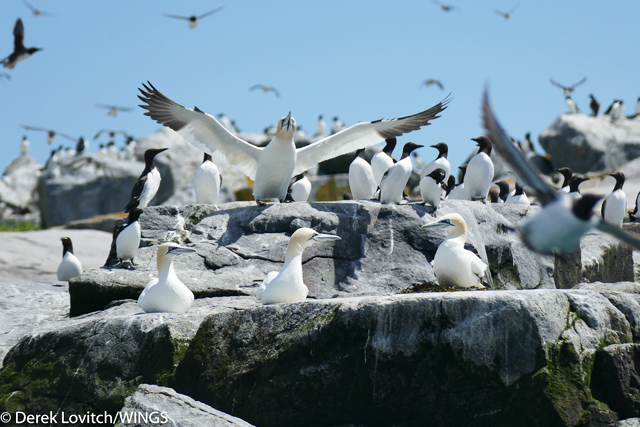
These Northern Gannets, here with Common Murres, may be prospecting a new breeding site

The perfect dinner...lobster steamed for 12 minutes and served outside with melted butter and lemon
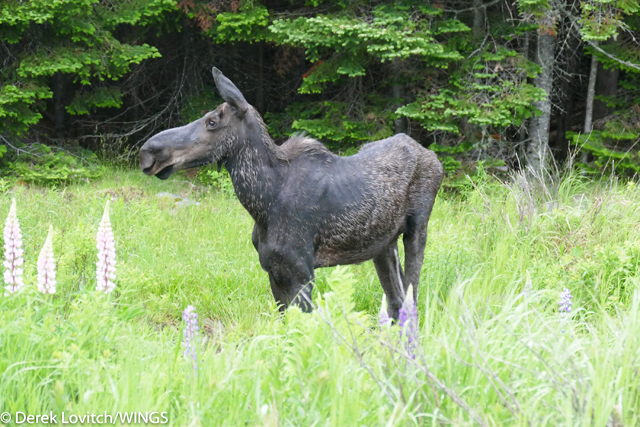
Moose are in steep decline in northern New England so we felt lucky to see this one
July 10:
Gavin Bieber, Jon Dunn and Jake Mohlmann on the Alaska Majesty Extensions: The Pribilofs and Barrow
The Pribilof Islands were amazingly productive both for the diverse and stunning complement of breeding alcids, fulmars and kittiwakes that clog the island cliffs in the summer, and for wanderers from Asia. Views of birds like Tufted Puffin or the diminutive Red-legged Kittiwake are daily occurrences here.
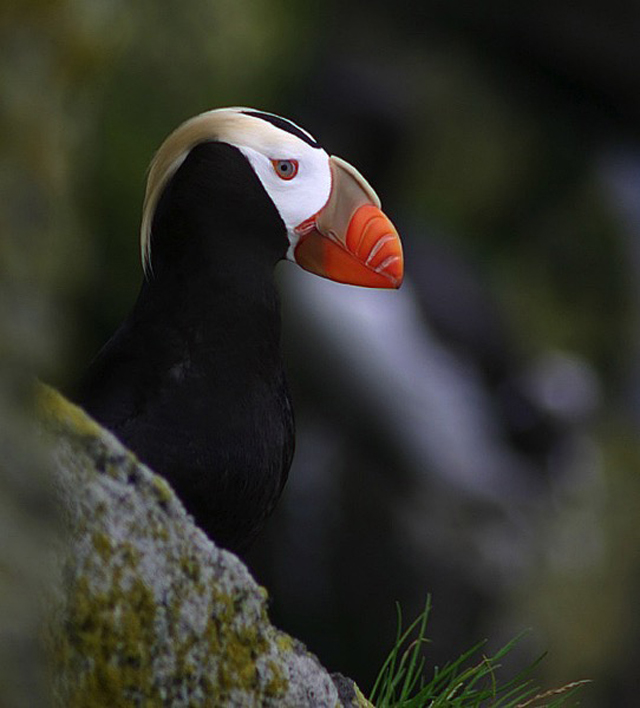
The unparalelled Tufted Puffin
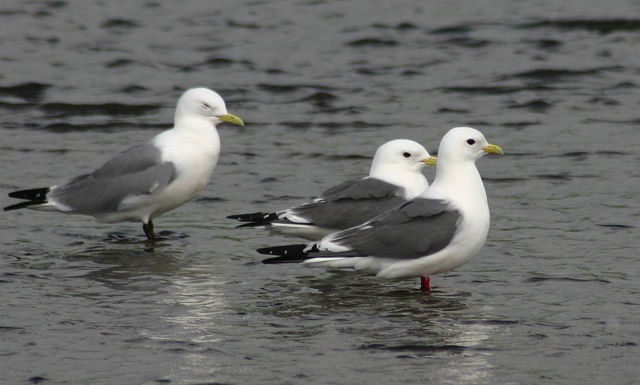
Handsome Red-legged Kittiwakes, here with a Black-legged Kittiwake, are a north Pacific specialty
Certainly not a daily occurrence was this lingering Marsh Sandpiper, perhaps the best of a great suite of vagrants including Common Snipe, Sharp-tailed Sandpiper, Tufted Duck and Hawfinch.
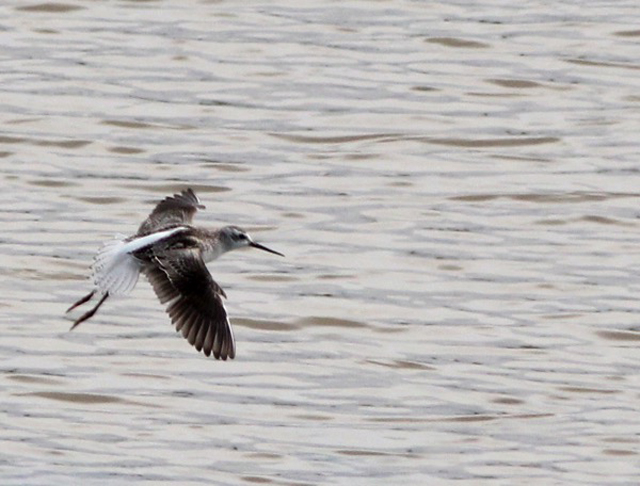
This long-staying Marsh Sandpiper was a welcome sight.
Our post tour extension to the high arctic north slope around Barrow was superlative, with repeated views of all four species of Eider in excellent plumage including dazzling Steller’s and vaudevillian King, a ghostly white male Snowy Owl, and foraging Sabine’s Gulls just feet away from our van.
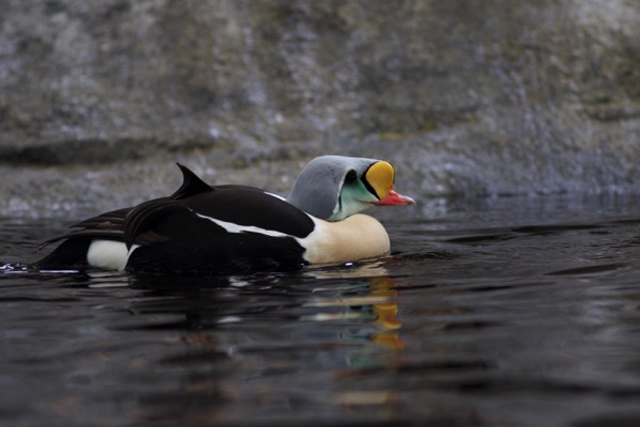
King Eider males are extraordinary
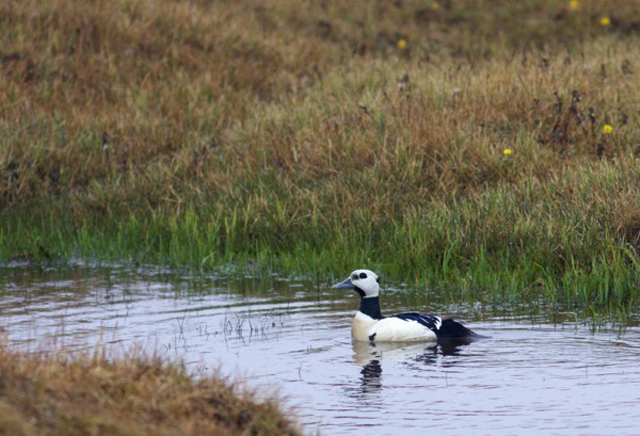
Steller's Eider populations have declined in recent years but they still grace the tundra at Barrow
Here though it is the shorebirds which dominate, as they are in active display during the onset of their breeding season. Watching the astonishing Pectoral Sandpipers call and strut around like grouse, or the very approachable Red Phalaropes in their gaudy summer dress is always a treat.
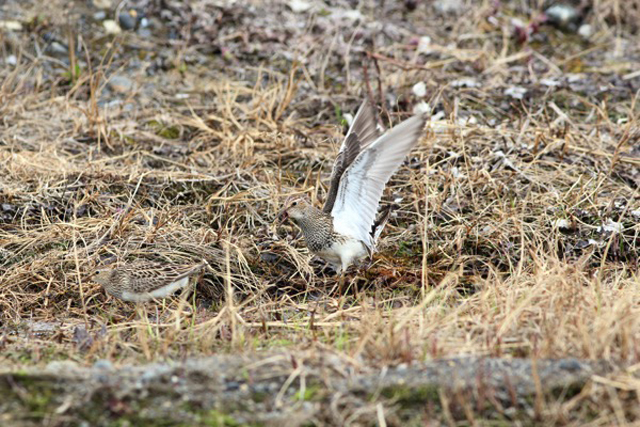
Courting Pectoral Sandpipers add a dramatic aspect to a species we normally see creeping around muddy pools
These two outposts act as a perfect complement to the mainland tour, offering excellent views of some of the hardest to find breeding species on the continent, and truly unique scenery.
July 5:
Gavin Bieber on his and Jake Mohlmann's tour, Alaska: Majesty of the North
A very mild winter coupled with the apparent failure of many Arctic breeders made a few species hard or impossible to find but, as if in compensation, above average sunshine and temperatures virtually everywhere made for a gloriously comfortable tour. We started with a drive to Denali National Park, finding both Black-backed and American Three-toed Woodpeckers feeding in a recent burn. The Park itself was as always extraordinary with stunning landscapes at every turn and a wilderness that seems to stretch on forever. Here we found mammals of the north such as Grizzly Bear, Reindeer and Moose, and as well several cooperative Spruce Grouse. Nome combined the best of Alaska with riveting scenery and great birds. We had close Long-tailed Jaegers, point blank views of Willow Ptarmigan, an unusually high number of range-restricted Aleutian Terns, lots of Arctic Warblers...and very few mosquitoes. Resurrection Bay, this year with ample sun, was almost impossibly beautiful with Humpback Whales, Orcas and Bald Eagles really putting on a show, and close sightings of Kittlitz’s Murrelets. The towering forests around Seward were filled with the song of Townsend’s Warblers, Varied Thrushes and pugnacious little Golden-crowned Kinglets.
The variety and abundance of birds and other wildlife on this tour is staggering, and contribute to what must be one of the most spectacular birding tours in the world.

The Denali Highway offers endless and spectacular scenery
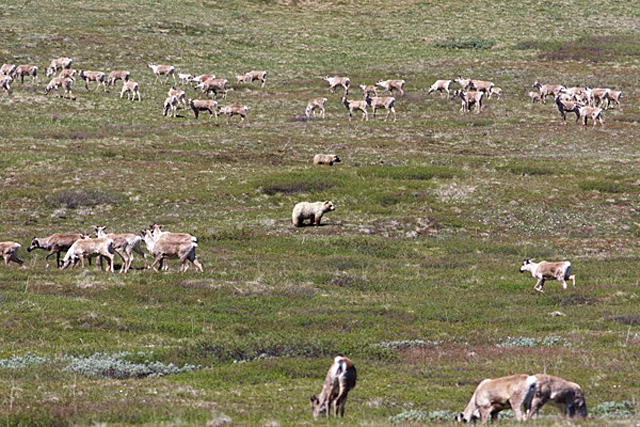
A herd of Reindeer stroll through Denali National Park
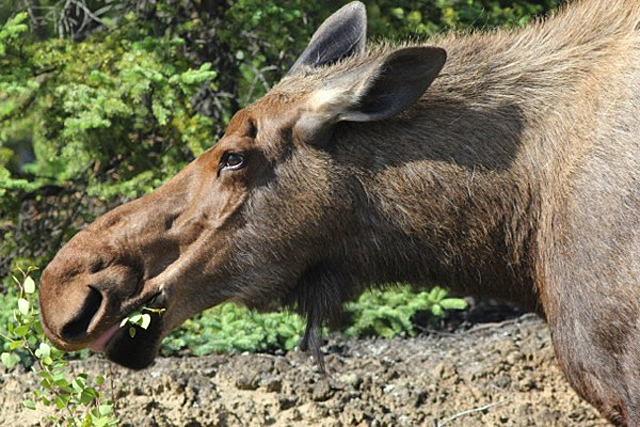
Moose are common and often hard to see...but not in this case
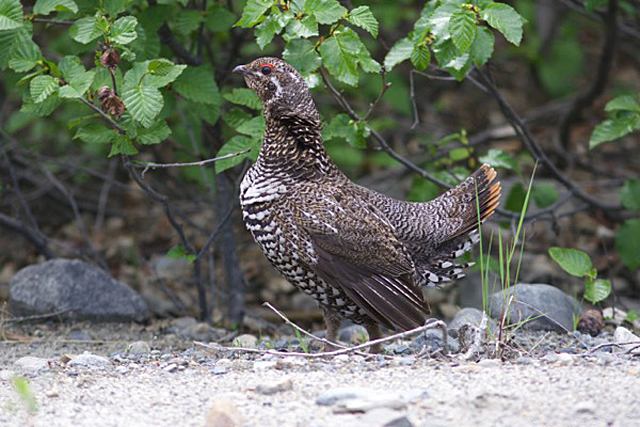
Spruce Grouse, once you find them, are not shy
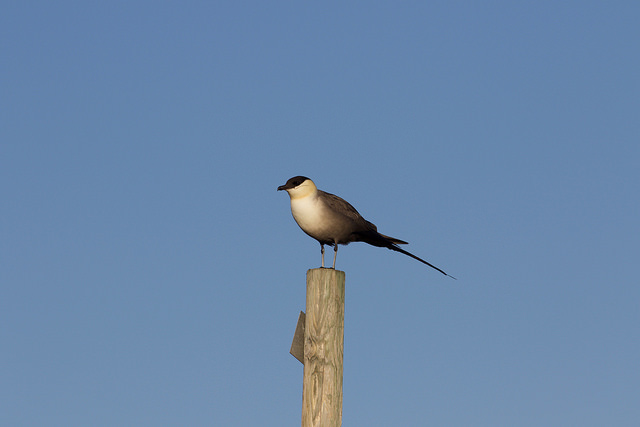
Elegant Long-tailed Jaegers dot the tundra at Nome
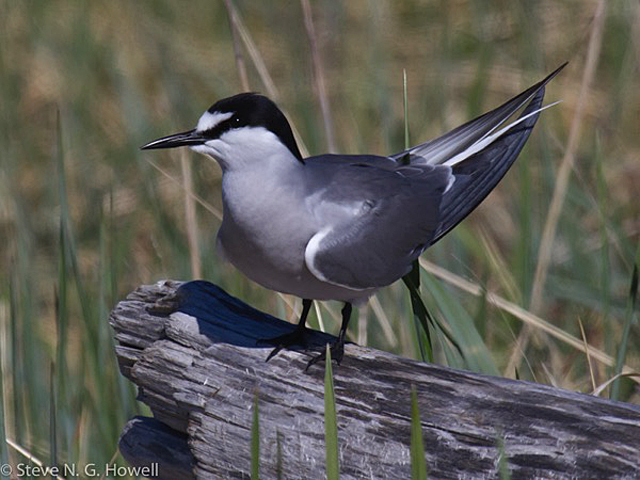
This year, Nome's Aleutian Terns gave particularly good views
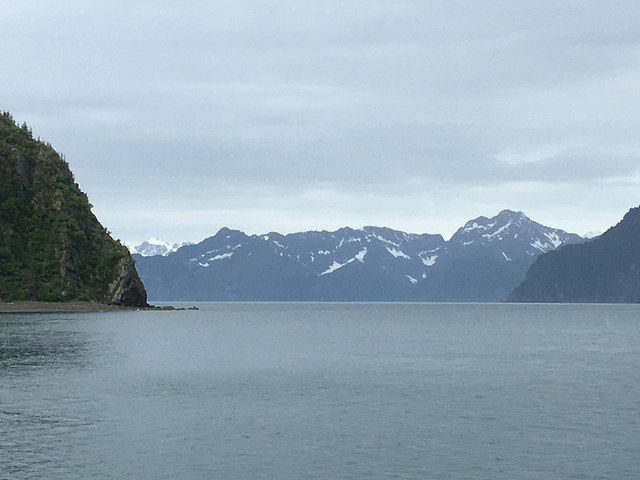
Our day on Resurrection Bay is always a highlight
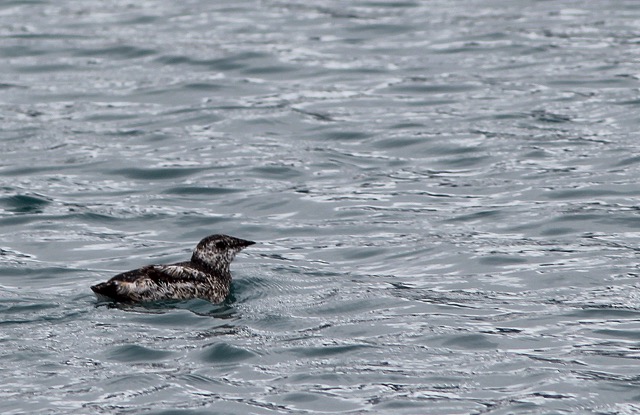
A Kittlitz's Murrelet at close range
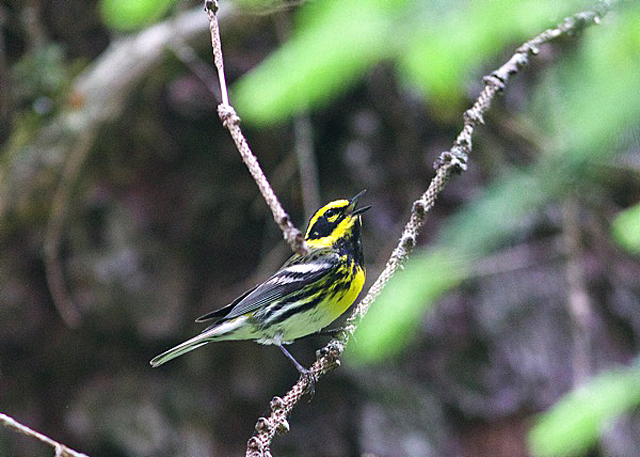
Townsend's Warblers are common in the Sitka Spruce around Seward
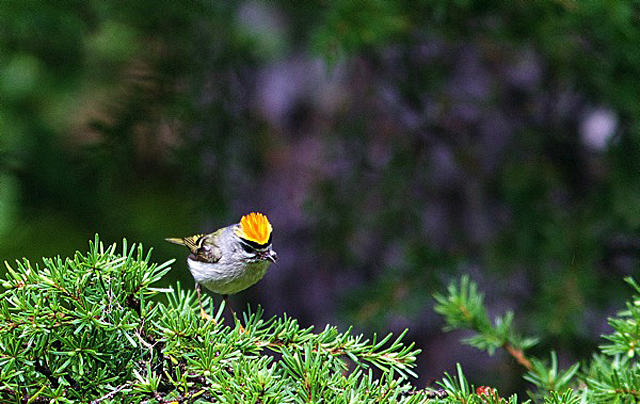
It's not every day one sees the full crown on Golden-crowned Kinglet
June 19:
Evan Obercian on his just-concluded tour, Minnesota and North Dakota: North Woods to Prairies
This year’s Minnesota and North Dakota tour was a delight, with lovely summery weather and a great abundance of breeding birds in full form. In a little over a week’s time we covered a wide range of habitats, from eastern broad-leaf forest, to boreal bogs and fens, to short-grass prairies and cattail-filled pothole lakes. Among the many highlights were stunning views of singing Connecticut Warbler, a daytime singing Northern Saw-whet Owl, multiple Ferruginous Hawks, close scope views of Baird’s and Henslow’s Sparrows, a Chestnut-collared Longspur nest with eggs, and a fledgling Sprague’s Pipit flushed from the grass while an adult sang overhead. We also had a great encounter with a wolf!
We thank Peter Schneekloth for providing the following images from the tour.
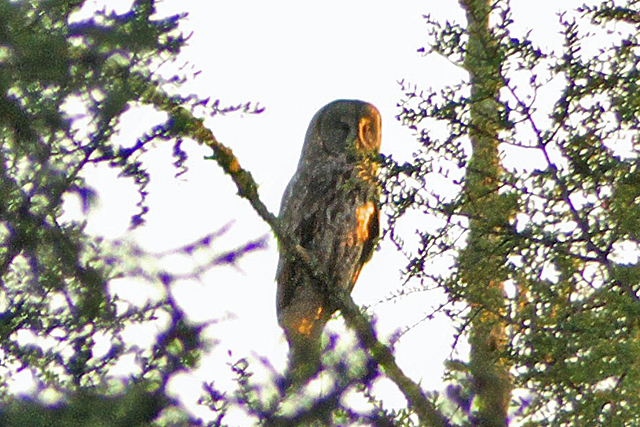
A few pairs of Great Gray Owls nest in the bogs north and west of Duluth. We were particularly lucky this year to locate a family group on our first evening in Sax-Zim Bog, even witnessing two fledglings being fed by an adult.
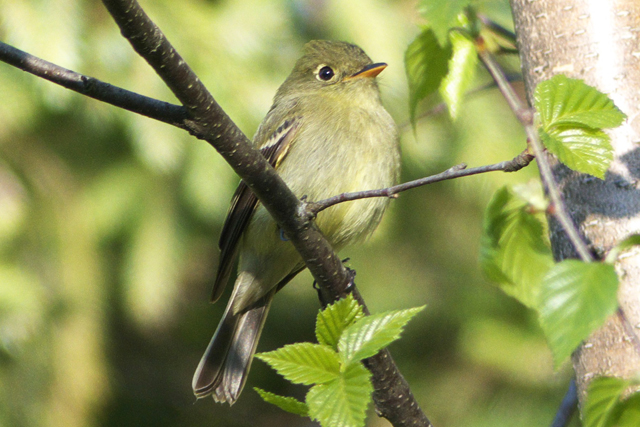
Among the more sought-after boreal zone species, this Yellow-bellied Flycatcher provided a wonderful study.
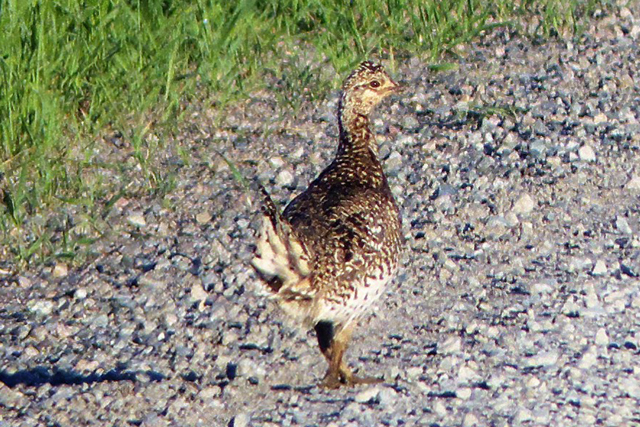
It’s not always easy to find Sharp-tailed Grouse in June, but this one seemed reluctant to enter the wet grass one morning, remaining in the road for prolonged views
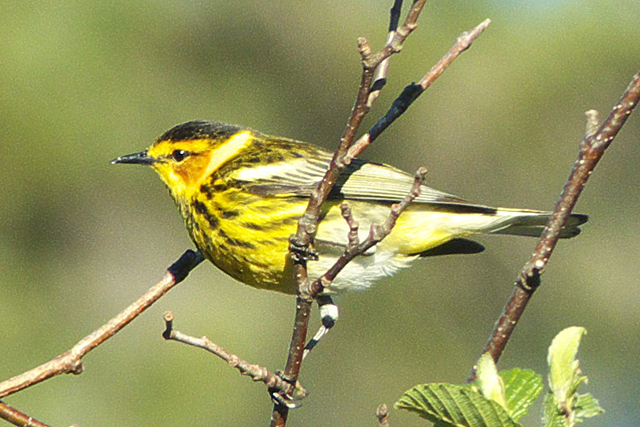
Of the 23 species of breeding warblers encountered on our tour, it’s difficult to say which is the most remarkable, but the Cape May, being a bird of true boreal spruce forest, is always among the most exciting. We find them on only one day of our tour, in the spectacular forests of Lake County, Minnesota, where they are quite numerous.
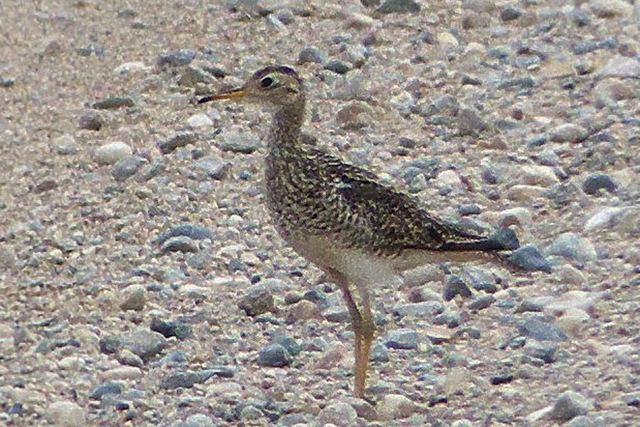
Upland Sandpiper is an increasingly scarce bird of America’s grasslands. It wasn’t until our final day of birding that we managed to locate several in a well-managed prairie in western Minnesota.

